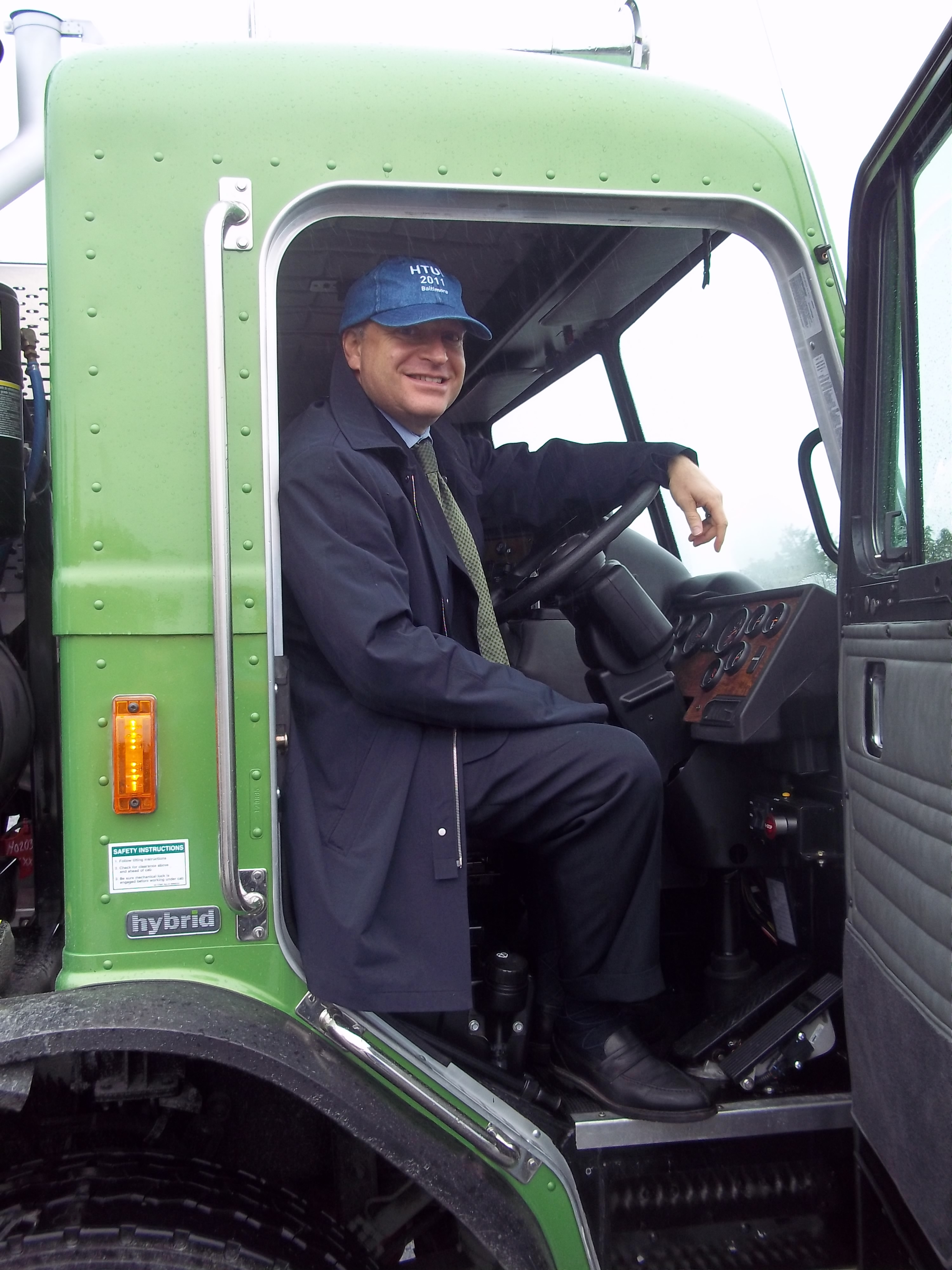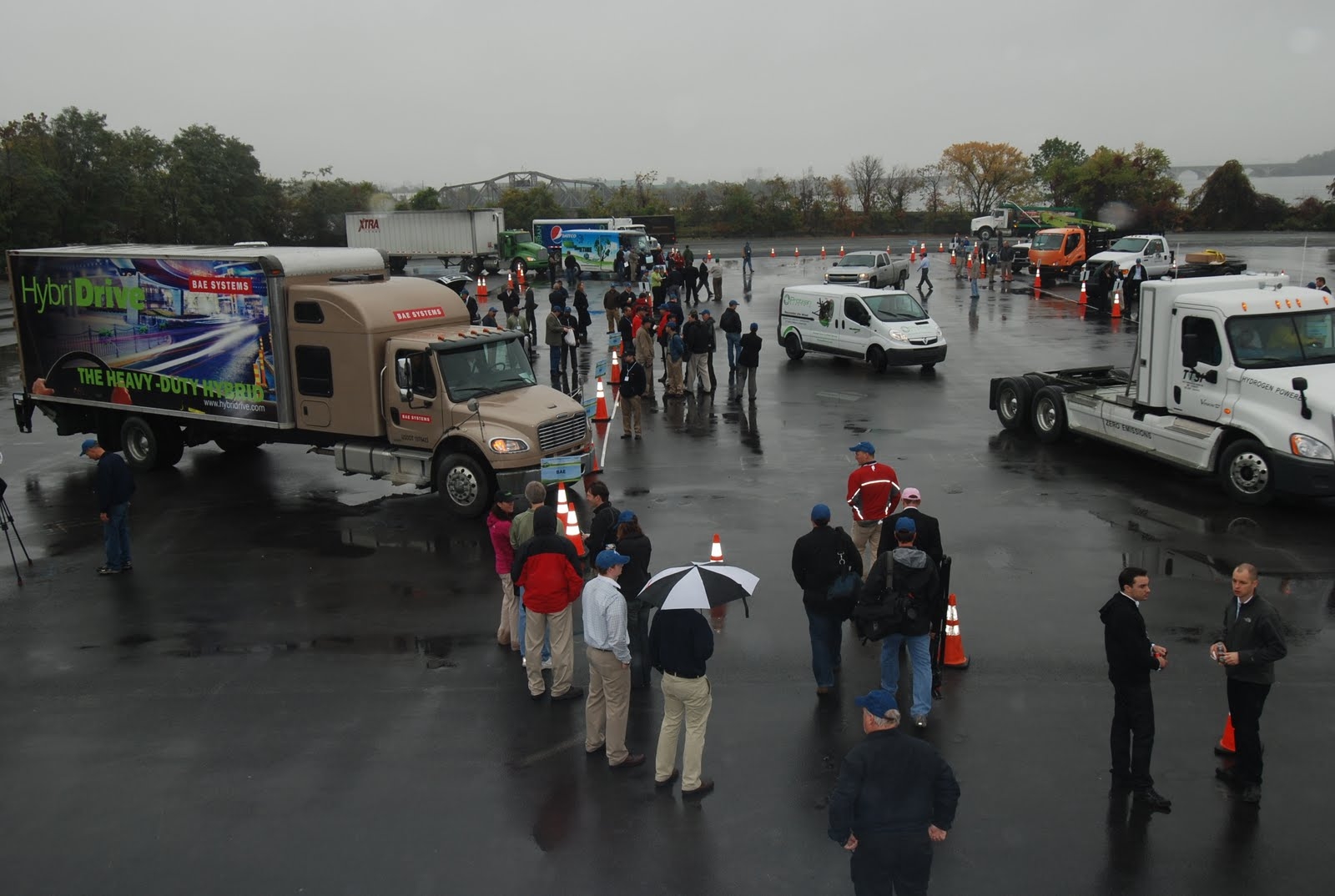
HTUF is a good example of the successful public-private partnerships that this Administration looks to foster. For the conference attendees, the "ride and drive" convoy was an opportunity to show off and try out fuel efficient and all-electric trucks of all shapes and sizes, many rolling through streets across the country today and others destined for tomorrow's delivery routes. For me, it was an exciting look at cutting-edge technologies and a reminder of the value of policies that foster this innovation.
From day one, the Administration has supported investments in breakthrough clean energy technologies that will reduce air pollution, address climate change, improve our nation's energy security, help our industry outcompete the rest of the world, and drive long-term economic growth. For example:
- Thanks to investments in clean energy, the U.S. is on track to produce 40% of the world's batteries for advanced vehicles by 2015, a major leap from producing just 2% of the world's batteries prior to the Recovery Act.
- A Presidential Memorandum issued this May directs agencies to implement government-wide fleet management practices that will ensure the Federal Government is leading by example, purchasing 100% alternative fuel vehicles by 2015 and reducing oil consumption by 30% by 2020.
- Through public-private partnerships like the National Clean Fleets Partnership and EPA's SmartWay program, the Administration is helping large companies and the trucking industry reduce diesel and gasoline use in their fleets and incorporate electric vehicles, alternative fuels, and fuel-saving measures.
- This summer, the Administration finalized first-ever fuel efficiency and greenhouse gas standards for heavy duty trucks. This is on top of the President's announcement of a framework for proposed fuel efficiency and greenhouse gas standards for cars and light trucks that would double the efficiency of our light duty vehicle fleet by 2025.
With investment in technology innovation and standards that level the playing field for cleaner technologies to compete, the streets of our cities and towns will begin to look more like last week's convoy in Baltimore. Among the trucks on parade were class 8 tractor trailer hybrids, a class 8 fuel cell truck, hydraulic hybrid garbage trucks (interesting side note: EPA played a lead role in developing this technology), all-electric delivery vans and buses, hybrid work trucks, and bucket trucks with electrified boom lifts that eliminate the need to leave engines idling.
Not only will weekly garbage pick-up bring less pollution to your neighborhood, but many of the cutting edge technology innovations will find their way into other applications – in our cars, small trucks, and even our military vehicles. If you wondered why the U.S. Army co-sponsored a hybrid truck event, it's because the technology being tested in delivery trucks today can help reduce fuel use on the battlefield tomorrow. Announcing the Department of Defense Operational Energy Strategy recently, the Deputy Secretary of Defense Bill Lynn, explained the impact of our military's fuel dependence:
[T]he costs of that energy use aren't just financial, they are strategic and tactical. All too often those costs can be measured in lives lost moving and guarding fuel on the battlefield. These risks and costs associated with our energy use mean that we must change the way we manage energy on the battlefield, and strive to reduce demand at all levels of our forces.
Finally, last week's technology showcase wasn't just a window into America's future; it was a glimpse of the future of transportation worldwide and the business opportunities for U.S. industry. Demand is growing across the globe for cleaner transportation options that use less fuel and create less pollution, and U.S. companies are positioning themselves to lead this market. At the conference last week, CALSTART kicked off a U.S.-China Clean Truck Technology Forum to help connect clean truck and bus technology firms with partners in China. This project is funded by a grant from the Department of Commerce's International Trade Administration, which looks for opportunities to translate American business leadership into trade opportunities abroad.
As the President said on his first Earth Day in office,
Now, the choice we face is not between saving our environment and saving our economy. The choice we face is between prosperity and decline. We can remain the world's leading importer of oil, or we can become the world's leading exporter of clean energy. We can allow climate change to wreak unnatural havoc across the landscape, or we can create jobs working to prevent its worst effects. We can hand over the jobs of the 21st century to our competitors, or we can confront what countries in Europe and Asia have already recognized as both a challenge and an opportunity: The nation that leads the world in creating new energy sources will be the nation that leads the 21st-century global economy.
We can be that nation, and from the leadership and innovation on display last week, I'd say we are on the road to get there.
Drew McConville is Deputy Associate Director for Energy & Climate Change at the White House Council on Environmental Quality



